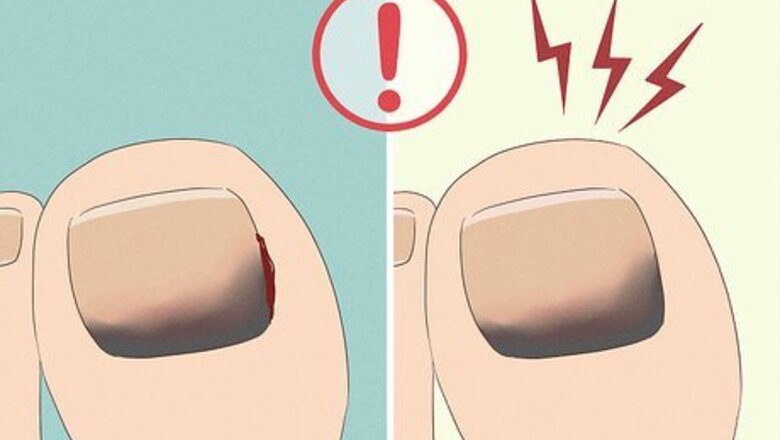
views
- Treat a toe injury by using the RICE method: rest, ice, compression, and elevation. Take OTC pain relievers to prevent discomfort and swelling.
- Deal with toenail fungus by using OTC antifungal creams. If those don’t work, make an appointment with your doctor for treatment.
- If you’re not sure why your nail is black, make an appointment with your doctor for a diagnosis.
Injury
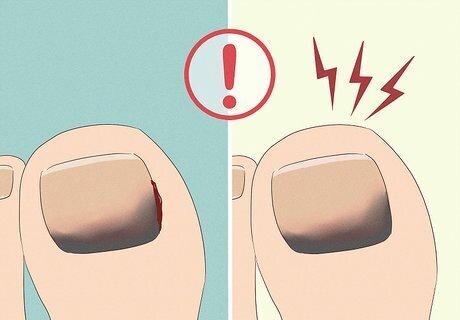
Look for signs of a toenail injury, like pain, pressure, and blood. Injury to the nail bed can cause blood to accumulate under the nail, creating a black or dark brown discoloration. This is called a subungual hematoma. You may also experience symptoms such as a feeling of pain or pressure under the nail. In some cases, it may be obvious that your black toenail was caused by an injury—for example, you may have dropped something on your foot or stubbed your toe. Black toenails can also develop gradually from repeated injury, such as pressure from overly tight shoes. If your shoes are slightly too small, you can stretch them at home to make them more comfortable. A black toenail is common in runners, ballerinas, and soccer players.
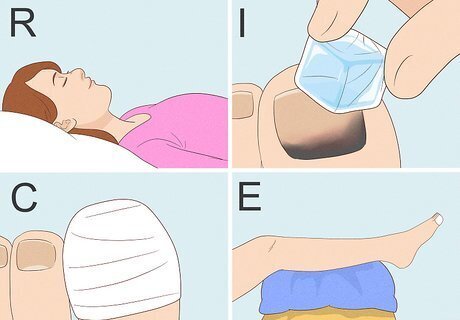
Use the RICE protocol to treat your nail at home. If your hematoma is minor and not causing you a lot of pain, you can likely manage it at home without medical help. Use Rest, Ice, Compression and Elevation (RICE) immediately after an injury to minimize swelling and pain and encourage your toenail to heal: Rest: Rest the nail by minimizing the use of the injured foot as much as you can. For example, avoid running or hiking for a couple of weeks after the injury. Ice: Put an ice pack wrapped in cloth or plastic wrap on the injured toe to numb the pain and reduce swelling (if you don’t have an ice pack on hand, you can make one at home. You can safely use an ice pack up to once an hour, for 20 to 30 minutes at a time. Compress: Apply gentle pressure by wrapping a bandage around the injured toe. This can help minimize the amount of blood that pools under your nail. Elevation: Reduce swelling by elevating your foot above the level of your heart as much as possible. For example, you might lie down on your couch with your foot resting on the arm rest or lie in bed with your foot propped on a pair of pillows.

Take over-the-counter pain relievers to manage pain. If your black toenail is painful, try an NSAID (non-steroidal anti-inflammatory drug) such as ibuprofen (Motrin), naproxen (Aleve), or acetaminophen (Tylenol), and follow the dosage instructions on the bottle. This can relieve your pain and reduce swelling and inflammation. Ask your doctor before using aspirin or products containing aspirin, since these could make any bleeding under the nail worse.
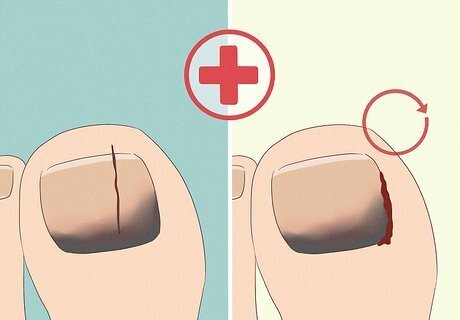
See your doctor if you have severe symptoms. In some cases, home treatment for a subungual hematoma may not be enough. Make an appointment with your doctor if you have symptoms such as severe or unbearable pain, uncontrollable bleeding from the injured area, or a deep cut to the toe or nail. The doctor may make a small puncture in your toenail with a laser or a needle to allow blood and other fluids to drain from under the nail. If the injury to the nail is severe or there are signs of infection, they may need to remove the nail altogether. If you are caring for a baby or small child with an injured toenail, take them to the doctor right away instead of trying to treat it yourself.
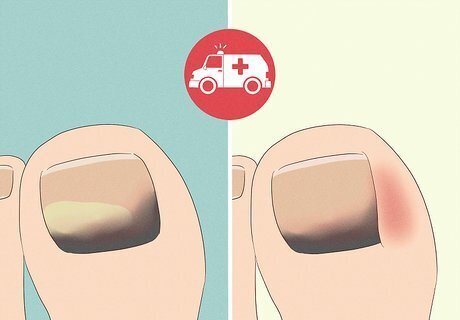
Get immediate medical help if you see signs of infection. Look for symptoms such as pus or other fluids seeping out from under the nail, increasing pain or swelling, redness around the injured nail, red streaks in your skin around the nail, or fever. The area around the nail may also feel hot to the touch. If you notice any of these symptoms, call your doctor or go to the emergency room immediately. Your nail may be more prone to infection if the toenail begins to come off, which is common with severe subungual hematomas.
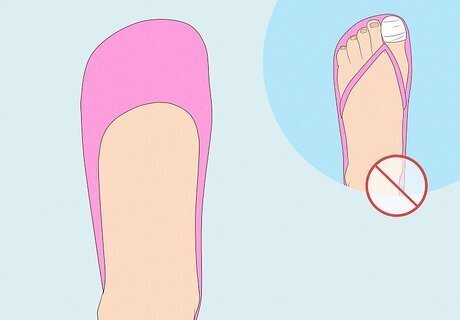
Protect your nail from further injury as it heals. After the initial injury, your toenail will need time and TLC to recover completely. Wear closed-toed shoes with plenty of space around the toes to keep your injured toe from getting bumped or squeezed. You can also keep your toe safe and healthy by: Keeping the nail clean, trimming your toenails regularly, and avoiding nail polish while your toe heals. Nail polish or false nails can slow down the healing process and make it harder to spot signs of infection or injury. Wearing comfortable, well-fitting shoes, especially while choosing running shoes. Wearing moisture-wicking socks to keep your feet dry and cushioned. Putting protective toe caps or tape on the affected toe(s) while running or hiking. To use toe caps, slide the cap onto the affected nail before putting on a sock. To use toe tape, wrap your affected toe with tape securely before putting on your socks.
Toenail Fungus
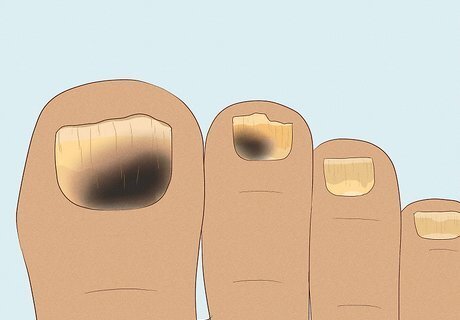
Check for symptoms of a fungal infection. If you have a fungal infection in your toenail, debris may build up under the nail, causing a dark discoloration. Look for additional evidence of a fungal infection, such as: Thickening or warping of the nail Whitish or yellowish-brown discoloration Crumbling or brittleness of the nail An unpleasant odor

See your doctor for a proper diagnosis. Since fungal infections in the toes can mimic the symptoms of other conditions, it’s important to get a diagnosis from your doctor so that you can treat the problem effectively. Make an appointment with your doctor so they can examine your nail and run lab tests to confirm or rule out a fungal infection. Your doctor may take some clippings from the nail or collect debris from under the nail with a scraper for lab testing. Tell your doctor about any symptoms you are having, as well as medications you are using or other health issues you may be dealing with.
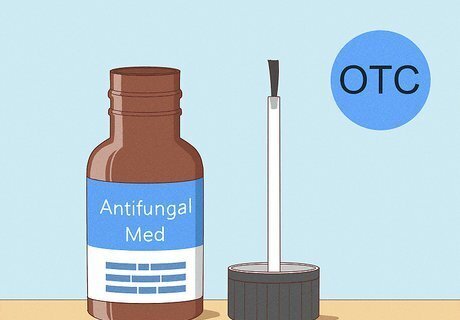
Try using over-the-counter antifungal medications. Before trying more aggressive approaches, your doctor might recommend using OTC treatments on your infected nail(s). Purchase an antifungal nail cream and apply as directed on the package to treat toenail fungus. These treatments may be more effective if you thin and soften the nail before applying the medication. Trim the affected nail and gently file down any thickened spots, taking care not to file through the nail. You can also help the medication penetrate deeper by applying a urea-based cream to the nail first, such as Urea 40+.
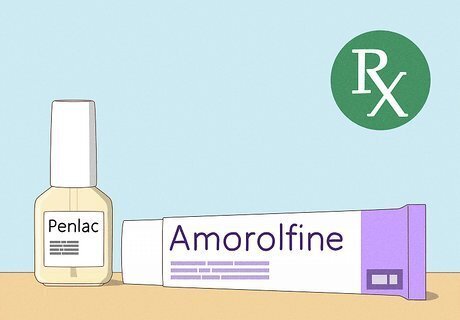
Ask your doctor about prescription topical antifungal medications. If your infection doesn’t respond to OTC treatments, your doctor might prescribe a topical antifungal cream, ointment, or nail polish. These medications can also be used together with oral antifungals for hard-to-treat infections. Follow your doctor’s instructions carefully. Commonly prescribed topical medications include amorolfine, ciclopirox, Efinaconazole, and Tavaborole. Some antifungal ointments may need to be applied daily, while others are only applied once a week. You will probably need several weeks of treatment for the medication to be effective. Some antifungal medications take the form of a medicated nail polish (Penlac) that is applied daily to the affected nail.
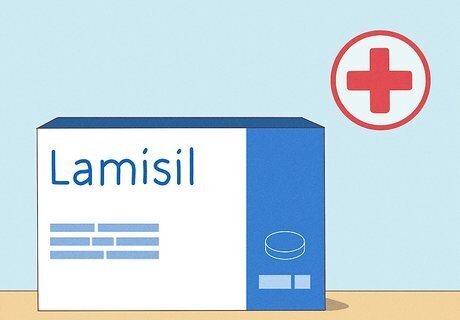
Talk to your doctor about using oral antifungal medications. If you don’t see an improvement after using OTC remedies or prescribed topical medications on your infected nail, see your doctor. They may prescribe a stronger oral antifungal. Common options include Lamisil, terbinafine, and Sporanox. These medications help kill the fungus and allow a new, healthy nail to grow in place of the infected one. You may need to take these medications for 6 to 12 weeks before the infection is eliminated. It can also take several months for the damaged nail to grow out completely, so don’t be discouraged if you don’t see an obvious improvement right away. Oral antifungal medications may cause serious side effects, like liver or kidney problems. Check in with your doctor frequently to make sure you are tolerating the medication well and that your labs all look good. Tell them about other medications you are taking or other health concerns you may have.

Discuss nail removal for hard-to-treat infections. If medicinal treatments aren’t working or if the infection is very severe, your doctor may recommend removing the nail so they can treat the nail bed directly. They may do this by applying a chemical that causes the nail to come off, or they might remove the nail surgically. In most cases, the nail will eventually grow back after treatment. This may take several months or up to a year. If the fungal infection keeps returning and does not respond to treatment, your doctor or dermatologist may need to do a surgical procedure to permanently remove the nail.
Melanoma in the Toenail
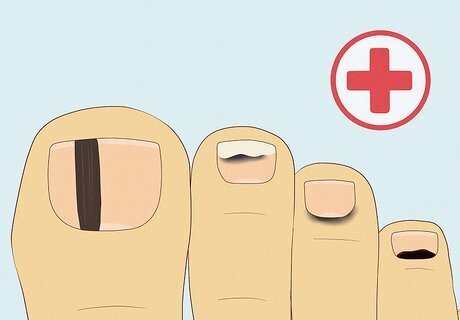
Examine your nail for melanoma symptoms. Melanoma is a type of skin cancer that is easily treatable, especially when caught early. A melanoma under the toenail (called a subungual melanoma) can resemble the type of dark bruise that occurs when the nail has been injured. If you see a dark spot under your nail but there has been no injury to the toe, get it checked by a doctor right away. Other signs and symptoms of subungual melanoma include: Brown or black streaks under the nail that may grow over time—particularly streaks that extend from the tip of the nail to the base of the nail bed A bruise or dark spot under the nail that does not move up or disappear as the nail grows Separation between the nail and nail bed Darkening of the skin around the nail Cracking, thinning, or warping of the nail Bleeding from under the nail

See your doctor right away for a diagnosis. If you suspect you have a melanoma under your toenail, don’t wait—make an appointment with your doctor right away. Melanoma is much easier to treat effectively if it is caught early. Your doctor will likely order a biopsy, in which a small amount of tissue is taken from the nail bed and examined for cancerous cells. If the tissue tests positive for melanoma and your doctor suspects that the cancer has begun to spread, they may also perform a biopsy on some of the nearby lymph nodes.
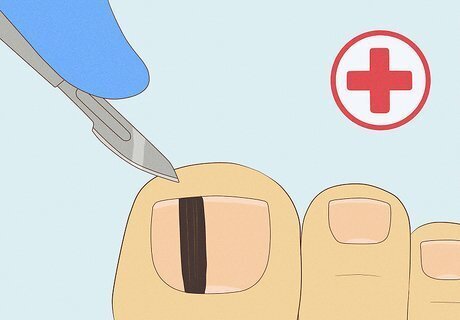
Have the melanoma surgically removed. The best treatment for melanoma is to remove the cancerous tissue. Depending on how thick the melanoma is and how far it has spread, your doctor may recommend removing the entire nail or part of the affected toe. If the melanoma has spread to the surrounding tissues or lymph nodes, it may be necessary to supplement surgery with chemotherapy or radiation therapy. Even if the extent of the melanoma is relatively limited, your doctor may still recommend additional therapies to prevent the melanoma from returning or to kill any remaining cancerous cells. Follow up regularly with your doctor after treatment and do routine self-checks in case the melanoma recurs.














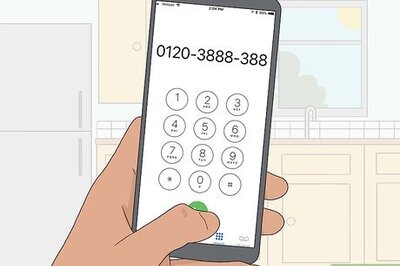



Comments
0 comment